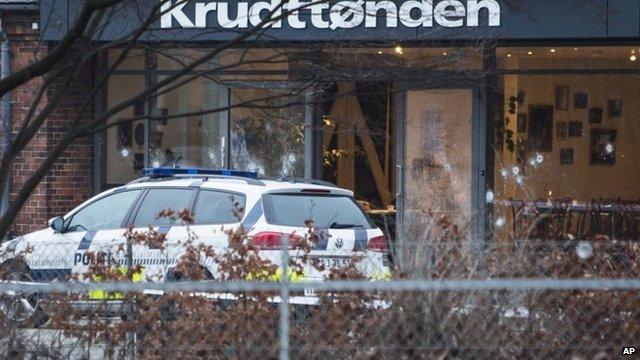Copenhagen shootings: Why Denmark was steeled for terror attack
- Published
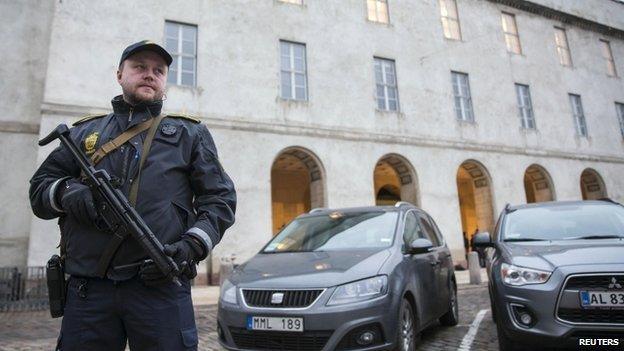
Armed police were deployed across Copenhagen in the wake of the shootings
It was always a case of not if but when. What's surprising is that it has taken this long for Denmark to be scarred by a fatal terror attack.
In September it will be 10 years since the Jyllands Posten newspaper inflamed the Muslim world with the publication of 12 cartoons of the Prophet Muhammad, including one of him with a bomb in his turban.
The country has been perpetually vigilant since 2005, after its embassies in the Middle East were burned, and Danish exports threatened.
Kurt Westergaard, the 79-year-old cartoonist who drew the seminal turban caricature, has spent the past decade living under a death fatwa (religious ruling). He narrowly escaped an attempt to kill him at home, and had to lock himself into a panic room when a Somali militant broke into his home in the city of Aarhus.
He continues to live under police protection.
The national intelligence service and the police have thwarted at least one potential attack against the offices of Jyllands Posten.
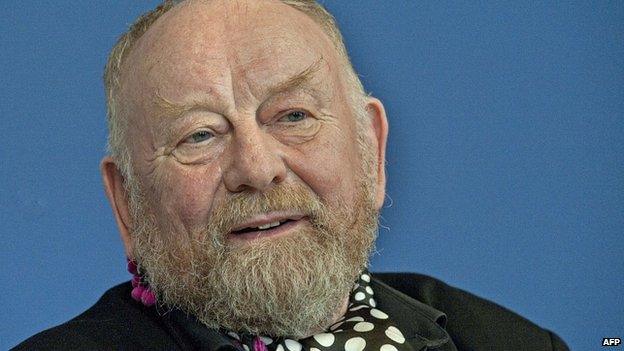
Danish cartoonist Kurt Westergaard faced death threats for depicting the Prophet Muhammad
Security at the paper's headquarters, and those of other publications, has been quietly stepped up in the wake of January's Charlie Hebdo massacre in Paris.
The intelligence agency PET decided against increasing the official level of alertness after the Paris attacks.
PET officers were on protection duty at the cafe on Saturday when the gunman sprayed the entrance with automatic fire.
Their presence and return fire ensured the death toll was not more severe.
The police appear confident that they have killed the perpetrator, an apparent lone wolf. But Copenhagen remains on a state of high alert.
Now the recriminations will begin.
The Danish chapter of Pegida - Patriotic Europeans against the Islamisation of Europe - is planning to march through Copenhagen on Monday evening.
- Published14 February 2015
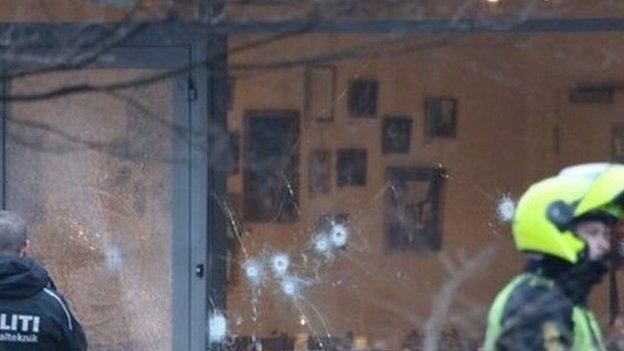
- Published14 February 2015
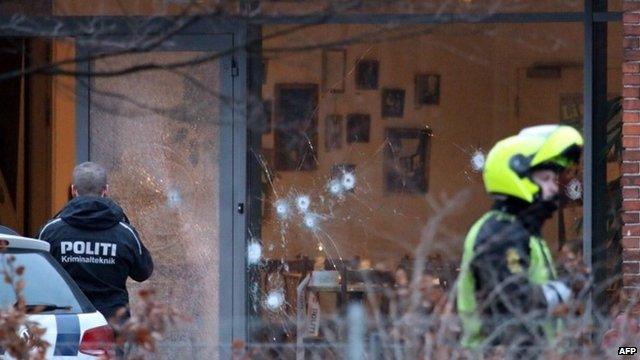
- Published15 February 2015
